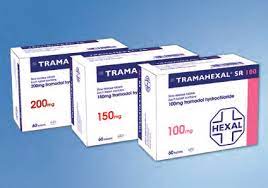How Long Does Tramahexal Take To Work?

What is Tramahexal?
Tramahexal is a brand of tramadol, a prescription drug that works by binding to opioid receptors in the brain, which relieves pain. Tramahexal belongs to a class of drugs called opioid agonists. A class of drugs is a group of medications that work in a similar way. These drugs are often used to treat similar conditions. Although it is effective at treating mild to moderate acute or chronic pain, tramadol is one of the least potent painkillers available.
However, Tramahexal can still be addictive, especially when taken for a long period of time or when taken in larger doses than prescribed. Tramahexal is a controlled substance. This means it can only be used with a doctor’s close supervision.
What is Tramahexal used for?
Tramahexal is used to treat moderate to severe pain. Tramahexal may be used as part of a combination therapy. This means you may need to take it with other medications. Tramahexal belongs to a class of drugs called opioid agonists. A class of drugs is a group of medications that work in a similar way. These drugs are often used to treat similar conditions.
How should Tramahexal be used?
Tramahexal is usually used with or without food every 4 to 6 hours as needed. Take Tramahexal exactly as directed. Take the extended-release Tramahexal at about the same time of day every day. If you are taking the extended-release, you may take it with or without food. If you are taking the extended-release, you should either always take it with food or always take it without food. Do not take more medication as a single dose or take more doses per day than prescribed by your doctor. Taking more Tramahexal than prescribed by your doctor or in a way that is not recommended may cause serious side effects or death.
Your doctor may start you on a low dose of Tramahexal and gradually increase the amount of medication you take, not more often than every 3 days if you are taking the regular tablets.
Do not stop taking Tramahexal without talking to your doctor. Your doctor will probably decrease your dose gradually. If you suddenly stop taking Tramahexal, you may experience withdrawal symptoms such as nervousness; panic; sweating; difficulty falling asleep or staying asleep; runny nose, sneezing, or cough; pain; hair standing on end; chills; nausea; uncontrollable shaking of a part of your body; diarrhea; or rarely, hallucinations (seeing things or hearing voices that do not exist).
How long does Tramahexal take to work?
Tramahexal generally starts to relieve pain within an hour in its fast-acting forms, which are used for short-term pain management.
Fast-acting forms of tramadol include:
- Drops
- Injections
- Some formulations of tablets and capsules
With slow-release or extended-release (ER) forms, the drug may take longer to start because it’s gradually released over 12 or 24 hours, but pain relief lasts longer. Slow-release tramadol is used to help with long-term pain. Slow-release forms include some formulations of tablets and capsules.
How quickly it takes the pain relieving effect to kick in can be affected by whether tramadol is combined with another pain relieving medication, such as a nonsteroidal anti-inflammatory drug. Tramadol should not be taken with other opioid medications.
When you take Tramahexal and it is absorbed into the bloodstream, you get a gradual onset of pain relief, that then reaches a peak, before the pain relieving effect tapers off.
- Fast-acting tramadol peaks in your system after 2 to 3 hours, and typically lasts around 6 hours. It’s taken every 4 to 6 hours as needed for pain.
- The extended-release version peaks at 10 to 12 hours, but generally provides lasting pain relief for up to 24 hours. It’s taken once daily.
Food doesn’t affect how tramadol is absorbed, so you can take it with or without food. But tramadol does have to be taken in its original form. It cannot be split, chewed or crushed. It also shouldn’t be dissolved.
- For fast-acting tramadol, the recommended limit is 400 mg per day. A starting dose is 25 mg or 50 mg. After titration, 50 mg to 100 mg may be taken as needed for pain relief every 4 to 6 hours.
- For extended-release tramadol, the recommended limit is 300 mg per day. It’s taken once daily and comes in three different strengths: 100 mg, 200 mg and 300 mg.
When you first start taking tramadol, a lower dose is prescribed and then slowly raised every few days until the optimal dose is found. People who have kidney disease, liver disease or are over 75 years old may need to take lower doses of tramadol.
When you’re in pain, it can be hard to wait for a medication to take effect, but it’s very important not to take more tramadol than prescribed.





